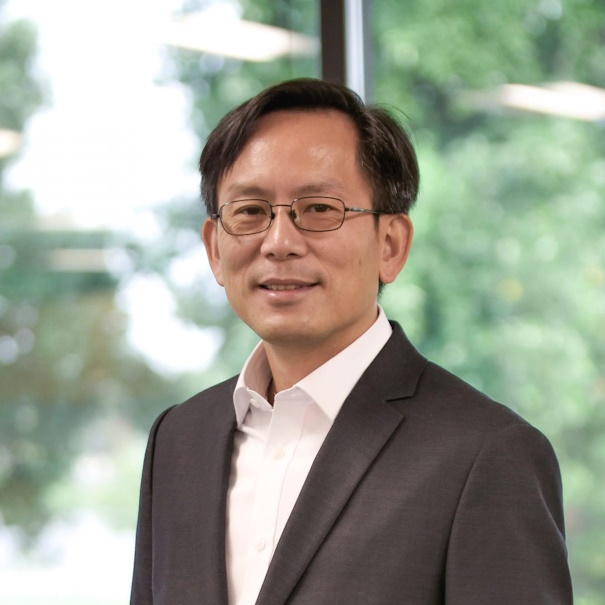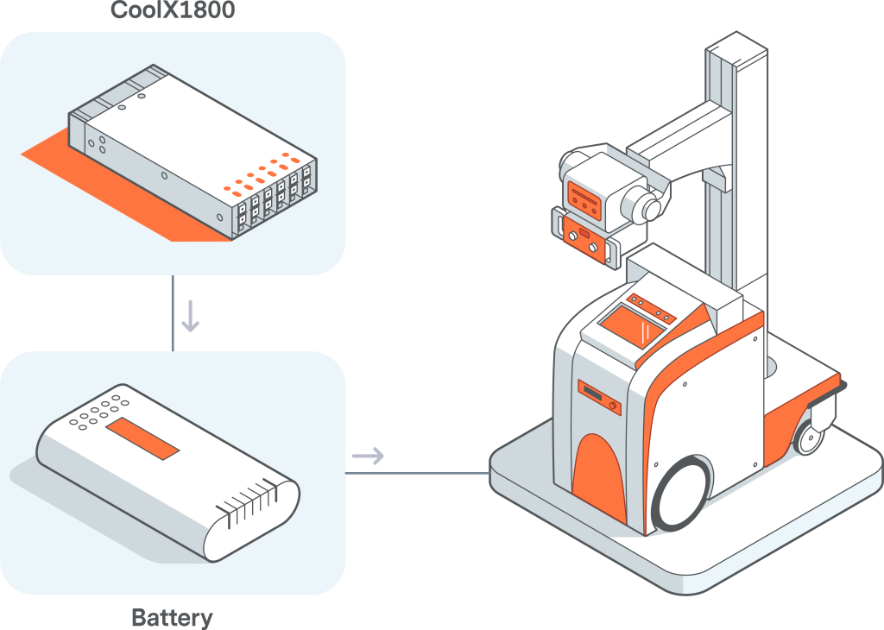5 Trends Driving the Data Center Industry Emerged from the 2021 OCP Summit
Posted November 30, 2021 by Edwin Mok

For the first time in almost two years, leading innovators in the data center space once again gathered in person at the 2021 OCP Global Summit in San Jose, California. Over the span of two days, Advanced Energy’s experts navigated the show floor, engaged with other key players and observed the latest trends driving the industry. It’s an exciting time for the data center industry. The rapid growth and adoption of Artificial Intelligence (AI), machine learning (ML), digital work tools, remote healthcare and the Internet of Things (IoT) are driving accelerated demand for more efficient data centers. With that comes a lot of new system requirements and new opportunities.
Here are the top 5 trends we observed at this year’s OCP Global Summit.
1. The Transition to 48 V Reaches Prime Time
While almost all of today’s data centers use 12 V power in server and storage racks, the industry is starting the transition to 48 V architecture, particularly as higher performance platforms demand more power. With 4x less current and 16x lower distribution losses compared to 12 V, 48 V delivers better thermal performance, with smaller busbars and increased efficiency of the entire rack. A growing number of vendors and multiple hyperscalers demonstrated 48 V hardware at this year’s OCP Summit, confirming that 48 V is here.
Advanced Energy is leading this transition with a range of its Artesyn 48 V power supply solutions. At this year’s OCP Summit, Advanced Energy demonstrated a family of new ORv3 power shelves featuring 97.5% efficiency and total power output levels ranging from 18 kW to the very high density of 36 kW in a compact 2OU form factor. As a key contributor to OCP ORv3, Advanced Energy collaborates with major OCP users and leaders in the data center industry to create a standard power platform for customers across deployments. Read more about how AE leads the adoption of 48 V architectures here.
2. Immersion Cooling Addresses Power-Hungry Applications
As power density continues to increase with the adoption of power-intensive AI and ML applications, traditional air cooling is becoming insufficient when density pushes towards 100 kW per rack. Over the past few years, the industry began exploring the potential for immersion liquid cooling in data centers, where the entire server rack sits inside a tank of cooling liquid, typically non-conductive coolant, to achieve higher cooling efficiency. With multiple hardware demonstrations and presentations of real-world testing results at this year’s OCP Summit, it was clear that the technology has advanced significantly and will continue to see healthy growth in the next few years. A sign of mass adoption is already here: earlier this year, Microsoft announced that it will roll out its 2-phase immersion platform in large scale.
As the technology achieves wider adoption, power supply hardware must be customized to meet the unique requirements of immersion cooling. For example, power supplies must be able to avoid contamination and withstand the chemical effects of coolant. Flow dynamics in a submerged power supply would be vastly different from a fan blowing air through the PSU. BBU submersion is projected to be very challenging, so its implementation into the server rack will have to take a new approach.
3. Edge Computing Presents Custom Power Opportunities
Edge Computing has been touted to create new opportunities across many markets. From 5G Telco Edge to Industrial Edge for IoT applications and many verticals in between, Edge Computing has become more important than ever to fulfill the promise of faster processing, lower latency, higher data security and more reliability than traditional Cloud Computing. Because next generations of Edge Computing require substantially higher data rate with increased compute power to run AI/ML applications, these Edge data centers will also require high density, high efficiency power supplies.
The wide range of requirements for different Edge Compute or data centers means that hardware at the Edge will be more diverse than at the Cloud. Edge Computing will require power supplies with many unique configurations and requirements, ranging from single-phase AC, 3-phase AC, 48 V, DC-input and many other configurations. As a result, Edge could lend itself to more customization opportunities than the standard server market. This complexity may also mean that standardization is harder to achieve.
4. Open Standards: Opening Doors Beyond the Top Hyperscalers
The Open Compute Project (OCP) aims to facilitate open source and collaboration to increase the pace of innovation in data centers. While a vast majority of OCP-based servers and solutions remain with the hyperscalers, more companies are now developing their own OCP-based infrastructure. According to Omdia’s OCP Impact Study presentation, share of non-hyperscale buyer of OCP hardware will increase from around 1/4 of the market in 2021 to almost 1/2 of the market by 2025. One example of a new adopter is Target, which detailed its progress in developing its own OCP-based data center and edge solutions during several presentations. To support its more than 1,900 retail stores in the U.S., Target discussed the need to standardize hardware, reduce components and improve efficiency in its infrastructure while allowing flexibility to address local needs, such as providing different types of power at individual sites.
5. New Processors Drive New DC-DC Converter Opportunities
New types of processors with high power requirements are increasingly being used in data centers, which in turn drives demand for new DC-DC power conversion solutions. These new processors are provided by both traditional vendors such as Intel and NVIDIA, as well as start-ups such as Ampere that offers processors designed specifically for many different applications from Cloud to Edge. Processors such as GPUs or FPGAs run on very high current that will drive demand for high-efficiency, high power density, DC-DC voltage conversion, especially with the adoption of 48 V. Some of these opportunities are captured by power IC makers, but there will also be increased demand for Point-of- Load (PoL) converters or power modules.
Looking at these trends, it’s clear that the future of the data center industry will require continued innovation in power conversion and delivery solutions to satisfy the increasingly power-intensive applications that drive tomorrow’s digital economy. Rooted in over 40 years of leadership in power conversion, measurement and control, Advanced Energy continues to lead the charge with industry-leading innovation, addressing cloud servers’ toughest challenges with highly efficient, high performing power supply solutions.


